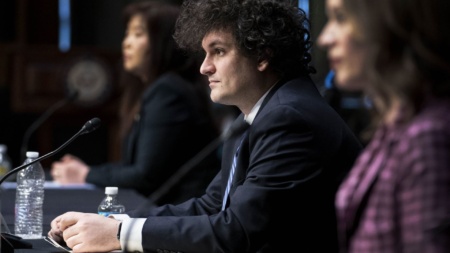
According to The New York Times, the US Attorney’s Office is investigating the case of Sam Bankman-Fried, the founder of the bankrupt cryptocurrency exchange FTX and its related trading platform Alameda Research, for his possible involvement in the organization of the “death spiral” of the stablecoin TerraUSD (UST). Also, Bloomberg sources report that FTX’s new CEO and bankruptcy lawyers met this week with representatives of the Federal Prosecutor’s Office in Manhattan regarding the investigation into the collapse of the exchange.
The Terra ecosystem was governed by a symbiotic relationship between two tokens that were managed by lines of automated access control code. If the price of UST was above $1, traders were interested in exchanging Luna for UST for profit and vice versa, thus the UST rate was supposed to be kept under control.
But when investors lost confidence in one of the tokens, the other went down as well – a so-called death spiral. As a result, the value of UST and Luna dropped to almost zero in just one week in May.
The question remains as to whose actions contributed to the acceleration of the spiral. The process has an overt and a hidden side. The first is what traders can see online: the process of exchanging UST wallets for other tokens, which has caused panic in the market. The hidden part is in the order books of centralized exchanges, where it’s harder to track who’s who because user information isn’t disclosed by the platforms.
Course
CFO
Become an experienced director-level finance specialist!
REGISTER!
At the beginning of May, the first signs of concern about the stability of UST appeared. Anchor, a decentralized lending protocol on the Terra blockchain, has reduced the yield it offers to customers to 18% as it begins to feel the burden of offering volatile rates to traders looking to lock in their tokens.
On May 7, Terraform Labs, the issuer of UST, withdrew $150 million worth of UST from Curve, a pool where investors could exchange UST for other stablecoins at par. Do Kwon, the founder of Terraform, said this is a preparatory step before the big investment in the pool in a week.
But a minute later, an unknown wallet exchanged $84 million in UST from the pool for USDC. And this wallet was not the only one: 12 other wallets exchanged tokens worth $321 million between May 7 and May 8. Seven of these wallets withdrew UST from Anchor back in January, and when the spiral began in May, the first wallet withdrew about $193 million in UST from Anchor.
Kwon concluded on Twitter that Alameda was complicit in lowering the value of UST.
All of the events in May resulted in an imbalance in the Curve pool, which at the time held more USTs than any of the three tokens represented. Luna Foundation Guard (a fund created by Terraform to raise money to keep the value of UST at $1) went into action by withdrawing $100 million of UST from the pool. To do this, they had to sell bitcoin that was held in reserve for the purpose of stabilization. This process, combined with worsening market sentiment, caused the price of Bitcoin to drop by 29%.
This happened when LFG and Terraform Labs were already in firefighting mode, spending a lot of stored cryptocurrency to prevent UST and Luna from falling to zero. They were also unsuccessful, as panicked exchanges and withdrawals from Anchor, already totaling $10 billion, made it impossible to restore the balance sheet.
While most of the UST activity has occurred on decentralized platforms such as Anchor and Curve, there has been some activity on centralized exchanges such as Binance, FTX and others. The problem was that when the prices of UST and Luna started to fall, virtually all of the liquidity of UST on the major exchanges evaporated.
Data collected by analyst firm Kaiko at the time showed that on May 8, there was a huge flow of orders on Binance for the pair UST and another stablecoin, USDT. On the same exchange, the “ask” side of the UST order book increased, which would make it difficult to re-peg the token to the dollar.
“Ultimately, poor liquidity on centralized exchanges likely played a huge role in the decline in UST’s peg, along with a series of events compounded by UST’s sharp exit from Anchor,” Kaiko’s Riyad Carey wrote at the time.
Kaiko also found that bids and funding volumes indicated that someone was aggressively shorting Luna. But because LFG was so focused on spending Bitcoin to help shore up UST on Anchor and Curve, there was relatively little reserve left to match the massive wall of selling that the token price faced on exchanges.
According to a New York Times source, most of those UST sell orders apparently came from Alameda. US officials declined to comment when contacted by Bloomberg. FTX did not respond to email inquiries.
“While we can’t prove it was FTX, it could have been them,” Clara Medali, Kaiko’s head of research, said in an email.
FTX Lawyers: “Significant Amount” of Crypto Exchange Assets Stolen or Disappeared




